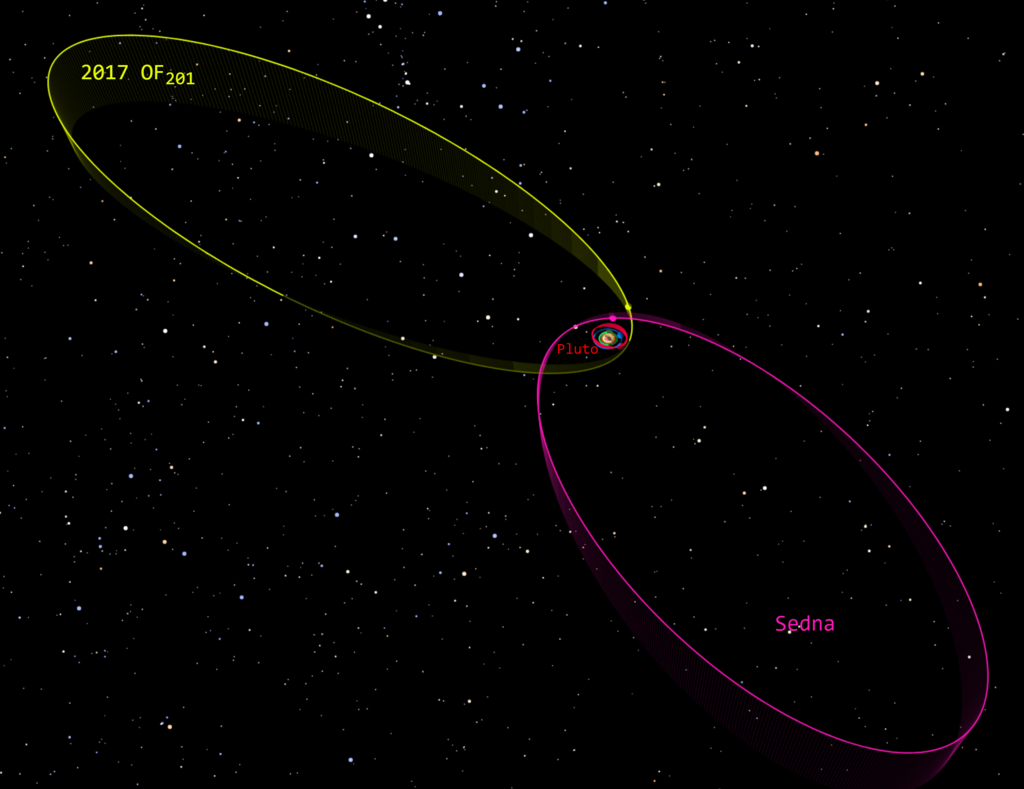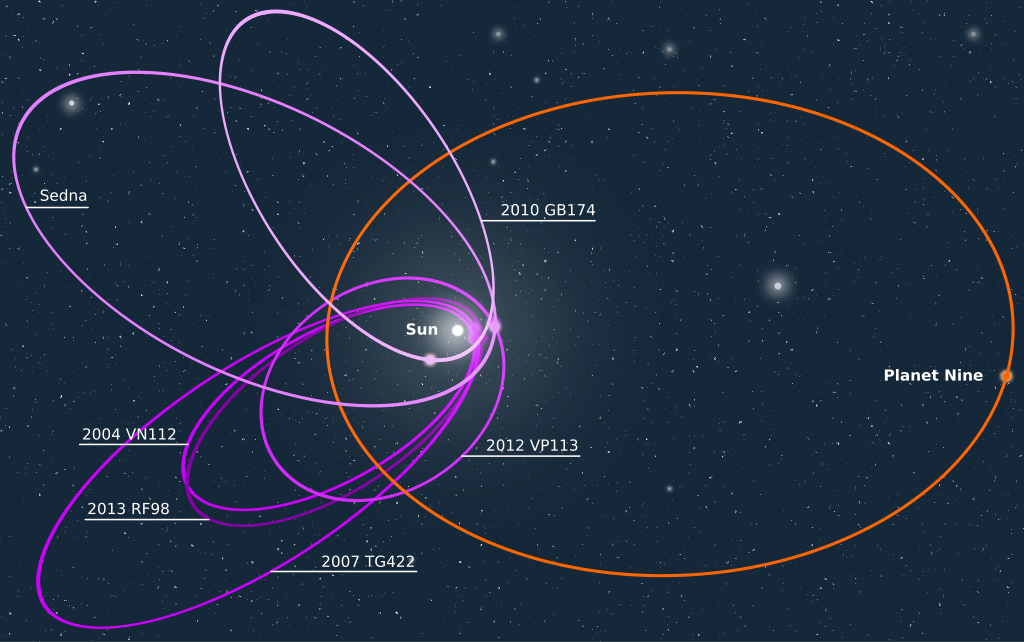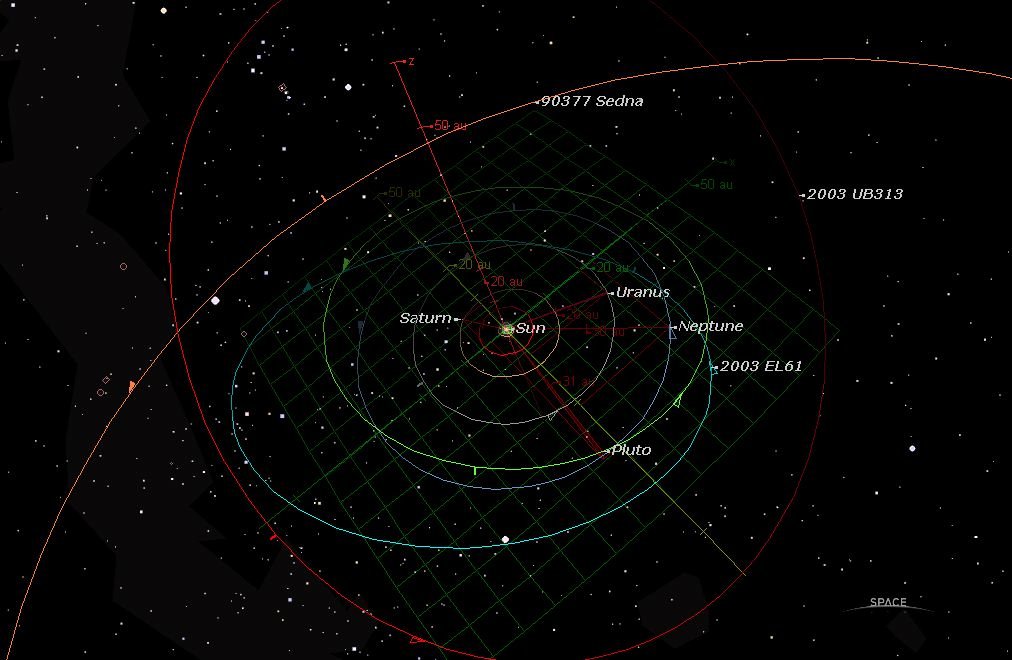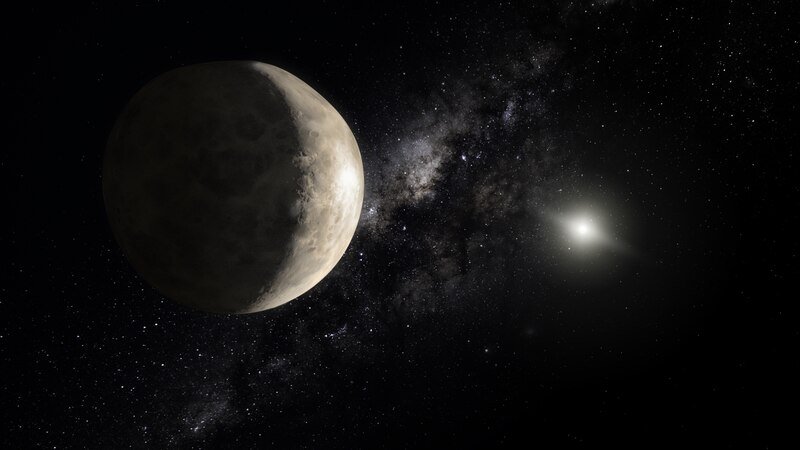A recently discovered celestial body is rewriting our knowledge of the Kuiper Belt and maybe challenging the existence of the elusive Planet Nine deep in the cold margins of our solar system. Called 2017 OF 201, this mysterious trans-Neptunian object (TNO) has an orbit so extreme it takes 25,000 years to complete one trip around the Sun. About one-third the size of Pluto, with an estimated 435 miles (700 km), it may shortly rank among dwarf planets. But the way its unusual path across space challenges accepted ideas about the outer solar system makes this discovery really revolutionary, not only in terms of size.
A Cosmic Outcast: The Bizarre Orbit of 2017 OF201

Unlike most planets and dwarf planets, 2017 OF201 follows a wildly stretched, elliptical orbit. At its closest approach (perihelion), it ventures 44.5 times Earth’s distance from the Sun similar to Pluto’s orbit. But at its farthest (aphelion), it retreats to a staggering 1,600 times Earth’s distance, deep into the hypothetical Oort Cloud.
This extreme trajectory suggests a violent past. “It must have experienced close encounters with a giant planet, causing it to be ejected to a wide orbit,” explains Eritas Yang, a researcher on the discovery team. Some scientists speculate it may have been flung outward by Neptune, only to be tugged back by another unseen force perhaps even Planet Nine though its unusual path could also undermine that very theory.
A New Dwarf Planet in the Making?
With an estimated diameter of 700 km, 2017 OF201 is large enough to qualify as a dwarf planet, a classification requiring sufficient mass to form a rounded shape under its own gravity. For comparison:
- Pluto: 1,477 miles (2,377 km)
- Eris: 1,445 miles (2,326 km)
- 2017 OF201: 435 miles (700 km)
If confirmed, it would be the second-largest known object in such a distant orbit, trailing only the controversial Sedna. But unlike most TNOs, which cluster in specific orbital alignments (a potential sign of Planet Nine’s influence), this one defies the pattern raising new questions about the outer solar system’s structure.
The Hunt for Hidden Worlds: What This Discovery Reveals
The detection of 2017 OF201 was no accident. Using archival data from the Victor M. Blanco Telescope and Canada-France-Hawaii Telescope (CFHT), researchers sifted through seven years of observations, pinpointing the object in 19 different exposures. What’s remarkable is that this distant world spends only 1% of its orbit close enough to be seen from Earth.
“The presence of this single object suggests there could be a hundred more like it,” says lead researcher Sihao Cheng. If true, the Kuiper Belt and the space beyond may be far more crowded than previously thought, forcing astronomers to reconsider the “empty” void past Neptune.
A Blow to the Planet Nine Hypothesis?

Since 2016, astronomers have speculated that a mysterious, undiscovered planet Planet Nine could explain why some TNOs orbit in strange, clustered formations. But 2017 OF201 doesn’t fit the mold. “Many extreme TNOs have orbits that appear to cluster… but this one deviates,” notes Jiaxuan Li, a co-discoverer.
Does this refutes Planet Nine? Not absolutely but it does imply that the dynamics of the outer solar system are more complicated than a single hidden world can explain. Some scientists now question if several gravitational disturbances rather than one large planet could be shaping these orbits.
The Future of Solar System Exploration

With next-generation telescopes like the Vera C. Rubin Observatory coming online, astronomers expect a flood of new TNO discoveries, possibly including more dwarf planets. 2017 OF201 is just the beginning.
“Even though we can explore distant galaxies, there’s still so much to learn about our own solar system,” Cheng declares. Future missions, such as NASA’s Interstellar Probe, could one time venture out into to the Kuiper Belt, offering direct insights into this frontier of uncharted territory.
Conclusion: A Solar System Full of Surprises
The 2017 discovery OF 201 is a reminder that there are still mysteries to be discovered in our cosmic community. From its peculiar orbit to the possibility of its classifying as a dwarf planet, this cold wanderer is a challenge to our understanding of the evolution of the solar system and the possibility of something else hidden in the shadows.
As telescopes grow more powerful, one thing is certain: Pluto isn’t the only dwarf planet worth watching. The outer solar system is far from empty, it’s a dynamic, chaotic realm where new discoveries await. And if 2017 OF201 is any indication, the biggest surprises are yet to come.
Sources:

Jan loves Wildlife and Animals and is one of the founders of Animals Around The Globe. He holds an MSc in Finance & Economics and is a passionate PADI Open Water Diver. His favorite animals are Mountain Gorillas, Tigers, and Great White Sharks. He lived in South Africa, Germany, the USA, Ireland, Italy, China, and Australia. Before AATG, Jan worked for Google, Axel Springer, BMW and others.




